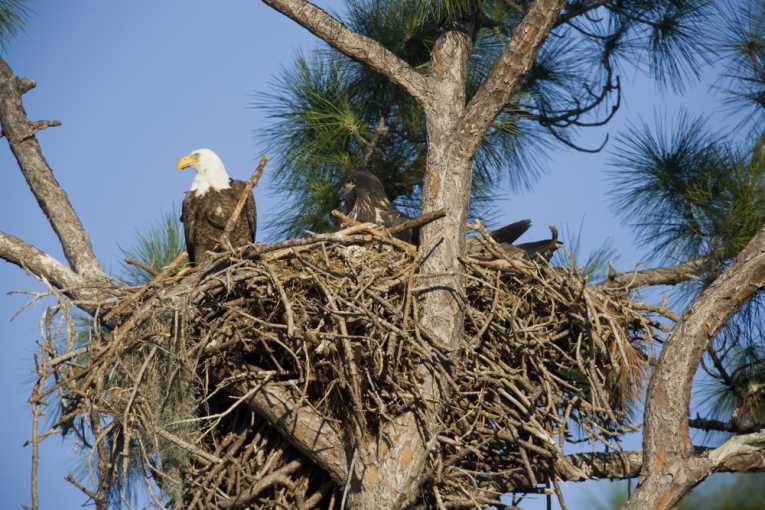Bald eagles are continuing to make a recovery in Florida. Latest estimates show there are 1,457 active bald eagle nests in Florida, according to the Florida Fish and Wildlife Conservation Commission (FWC).
That means Florida is one of the best of the 48 lower states for bald eagles to raise families were obtained in the FWC 2011 aerial survey.
Since 2008, when Florida started its management plan for America's national bird the numbers have risen by almost nine percent. In 1973 there were just 88 active nests.
FWC and conservation organisation Audubon of Florida spoke of the challenge of continuing the bald eagle's recovery on American Independence Day. They said celebrating the strengthening population of the nation's symbol was a great way to mark 4 July.
FWC Chairman Kenneth Wright says, "Bald eagles have made a remarkable recovery in Florida. The FWC and Audubon are working together to protect bald eagles in Florida, so these majestic raptors will continue to soar as a symbol of national pride and conservation success."
Audubon Florida has carried out an EagleWatch programme for 20 years where locals monitor one-fifth of bald eagles and their nests across the state to help protect and conserve the species.
Executive director for Audubon Florida, Eric Draper, says it is delighted to contribute to the bald eagle's recovery in Florida.
Aubudon also help landowners across the state to protect the habitat of bald eagles through the Cooperative Kissimmee Eagle Sanctuary Program, which has been running 50 years.
Most of the bald eagle nests in the state are located around the coast and freshwater areas, including the Kissimmee Chain of Lakes and in Osceola and Polk counties.
To see where the nesting sites are, go to the FWC website and visit its Bald Eagle Nest Locator at MyFWC.com/Eagle.
The bald eagle population across the lower 48 US states fell to an estimated 417 pairs in 1963 after use of the DDT pesticide weakened eggshells and caused them to break as adults sat on them during incubation.
Their well-being today depends on them finding suitable foraging and nesting habitats and not being disturbed while raising young.
Bald eagles are not officially endangered or threatened, but law and state regulation protect them. It is against the law to feed bald eagles, disturb them or possess a bald eagle, its feathers, eggs or nest.
The FWC bald eagle management plan aims to maintain or increase the species in Florida and contains guidance to avoid disturbing eagles that are nesting.
Since 1979, the Audubon Centre for Birds of Prey has released more than 450 rehabilitated bald eagles back into the wild.










